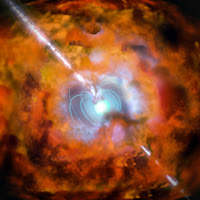"The reason why we care [about the first stars] is intricately related
with the air we're breathing right now," study co-author John O'Meara,
of Saint Michael's College in Vermont, said last week at a press conference at the 227th Meeting of the American Astronomical Society in Kissimmee, Florida.
"Early on in the universe, we did not have
heavy elements [such as oxygen] at all."
Read More|
Sustainable Products, Design And Development
ABOUT | AROMATIX | SOLAR KEY HIDER | CEDAR HANG UPS | AUTO KEY HIDER | TRAVEL SAFE |
Friday, January 22, 2016
Thursday, January 14, 2016
Living in the Anthropocene |
The era known as the Industrial Revolution and the changes that occurred during this period, were from 1760 to 1850. While the first industrial revolution was centered on iron, steam technologies and textile production, the second industrial revolution called "The Age of Synergy" in which most of the great innovations were developed, happened during the period of 1867 to 1914. It revolved around steel, railroads, electricity, and chemicals. We are, in all probability, in a repetitive cycle of such motions. It doesn’t happen in one day, one year or even ten years. It just doesn’t happen overnight. The first industrial revolution lasted for about 90 years.
Original Wordpress Post
Since the time of the Industrial Revolution,
what impact has humanity had on ecosystems
Original Wordpress Post
Since the time of the Industrial Revolution,
what impact has humanity had on ecosystems
Monday, January 04, 2016
Taking land out of food production and putting it into climate regulation |
Subscribe to:
Comments (Atom)
